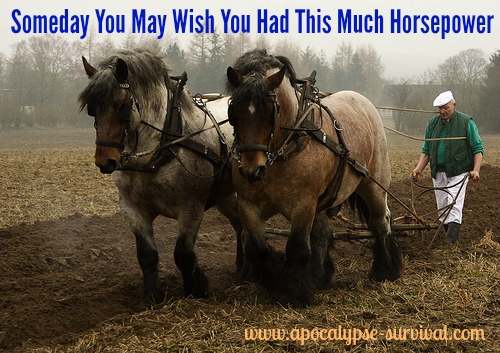Survival Gardening: Using
Manual Gardening Tools
to Cultivate and Harvest Food
Learning the basic principles of survival gardening will mean a long-term food supply for you and your family in the case of an apocalyptic event. You can stock only so many cans of food, and while hunting will provide a steady source of food, you need a source of heat to cook it, which may attract unwanted visitors.
The Right Tools for the Job
The key to this kind of gardening is having the right non-electric tools on hand. You have to make some assumptions about the post-apocalyptic world and the first of these should be that no electricity is available. This not only means that you won’t be able to use any corded gardening tools for survival gardening, but you’ll also lose tools that use batteries or need recharging after a few uses. Beyond a spade and a fork, you should look at getting some of the following tools ahead of time:
- Cultivator rake — A cultivator rake will make the job of preparing the ground much easier. Many people will hire a rototiller to do the job, but the cultivator rake is the best non-electric alternative. The long spikes allow you to get deep into the ground as well as acting as a surface rake to remove debris from the plowed fields.
- Hand plow — Once your topsoil has been broken up, you will need to plow small furrows to make maximum use of whatever space you have available. The hand plow drags behind you creating a deep depression in the ground to place the seeds. You can get hold of hand plows at antique shops or some grain stores.
- Hoe — Once the seeds are planted, you will need a way of getting rid of the weeds, and how long your weedkiller spray will last is anyone's guess. The thin blade of a hoe allows you to cut the roots of the weeds without damaging your crops. You may need a hoe with a thicker blade if you are dealing with shrubs with thicker roots.
Watering
One of the key issues for survival gardening in a post-apocalyptic world is having a source of clean water. You cannot be sure that the pumps will still be working and that any water you find will not be contaminated in some way. To get water for your plants, you could try:
- Collecting rainwater — If your area of the world gets enough rainfall, try setting up large plastic sheets that funnel down into water collectors. You could even attach hosepipes to the water collectors, which could be directed to hidden vegetable plots.
- Water purifiers — The sensible survivalist will already have half a dozen different water purification techniques in their skill set, from solar distillation to old-fashioned rock boiling. Collect water from nearby rivers or lakes and purify it before putting it on your plants.
- Food leftovers — If you are living off the proceeds of your survival gardening, you will find yourself boiling or steaming many vegetables. Instead of throwing away the used water, put it on your plants as it will have been purified and any nutrients that have leached into the water will not harm your plants.
Going Guerrilla Survival Gardening
Sustainable gardening takes up a lot of time and a lot of space, and the orderly rows that allow you to make maximum use of your space also act as an indicator to unwanted visitors that life and food is available.
To hide your work, try utilizing other green areas near your home, such as what normally passes for flowerbeds along walkways and the driveway, or areas in a local park, or try seeding a nearby woodland with vegetables plants not often immediately recognizable as food, such as potatoes, turnips, beans, peas, carrots, lettuce and even certain squashes.
Also, you don’t have to wait … and you shouldn’t wait … to get your garden started. If you want a supply of berries, nuts and fruit, then you need to start planting now. You also don’t need acres and miles of land to become self-sustaining. What's more, if you learn good gardening procedures before your inevitable first failures (which can be devastating if a disasters already underway), you can still pick up your veggies at your local store or farmers market if your corn doesn’t come up.
If failure does come your way, read up on those particular crops and try again – it’s rewarding getting next year’s crop just right, and you have the luxury of time to do it in.
Return from Survival Gardening to Backyard Farming






New! Comments
Have your say about what you just read! Leave me a comment in the box below.